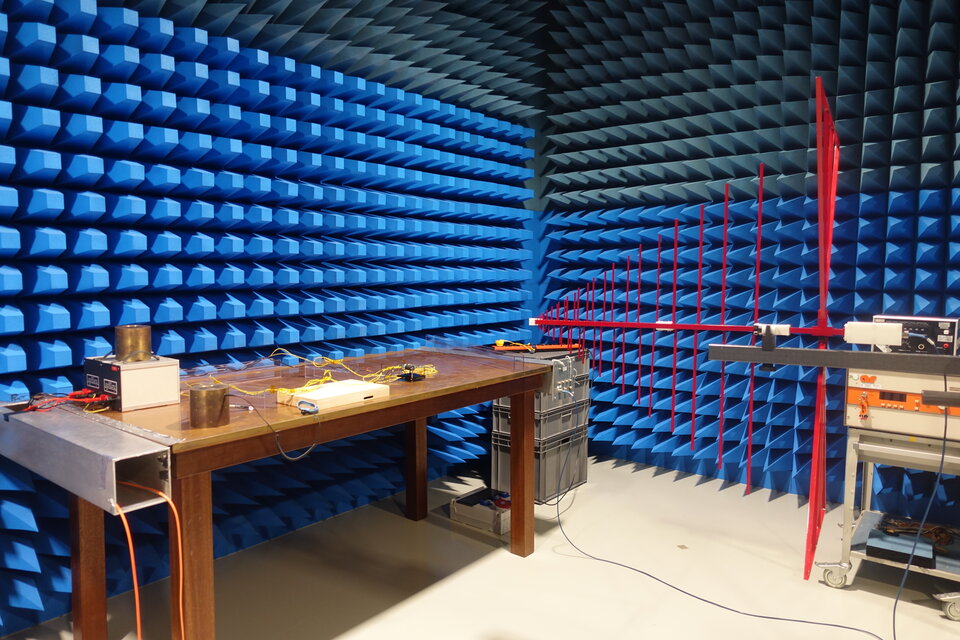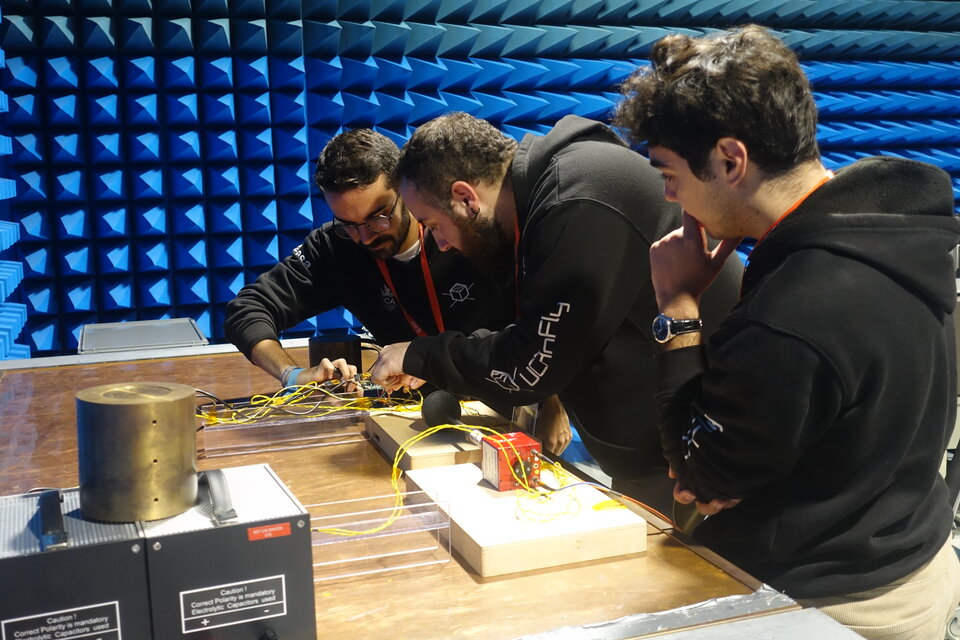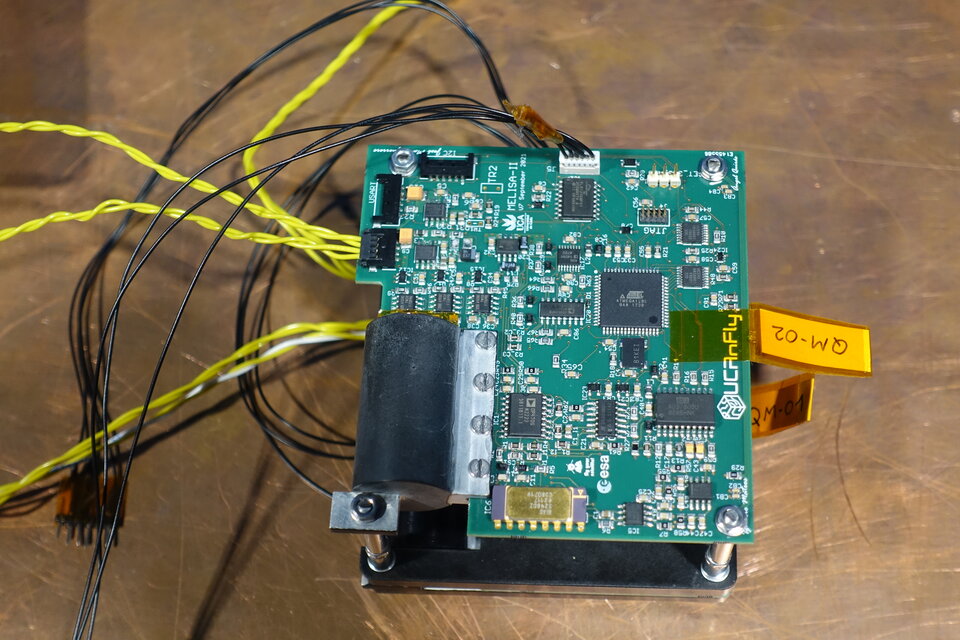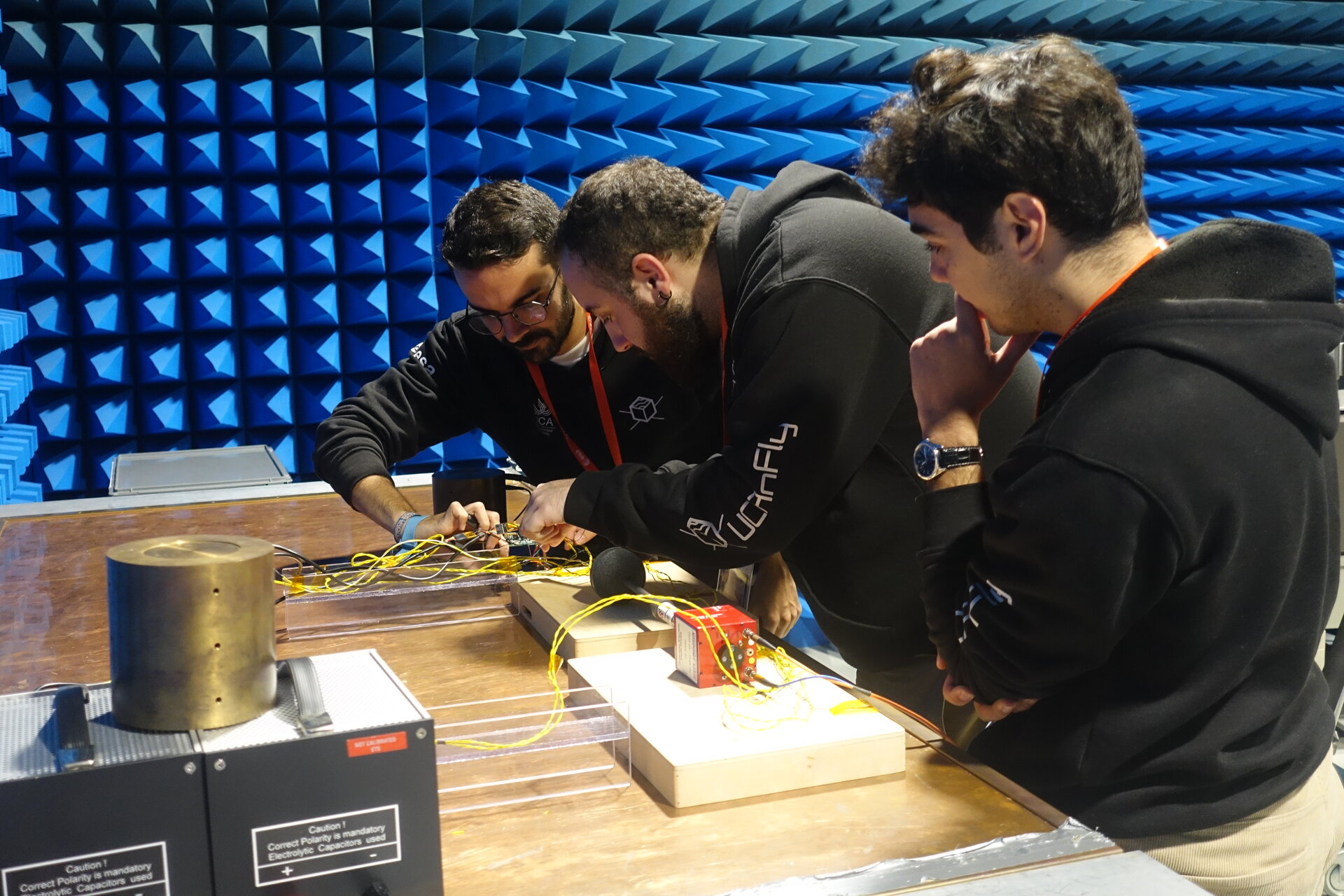UCAnFly's dream of launching a satellite is one step closer with Electromagnetic Compatibility test campaign
In brief
Three students from the UCAnFly team participating in the Fly Your Satellite! programme have travelled from their home base in Cadiz, Spain, to ESTEC in the Netherlands to conduct electromagnetic compatibility (EMC) testing on their payload.
In-depth
UCAnFly is the first-ever nanosatellite designed and developed in the University of Cadiz, Spain, and is part of the third edition of Fly Your Satellite!, an ESA Education program that gives university students the opportunity to design, build, launch, and operate real satellites.
The UCAnFly CubeSat is a one-unit (1U, with dimensions of 10x10x10cm) with a mission to allow in-orbit validation of a magnetic measurement subsystem, MELISA-II, based on chip-scale magnetoresistive sensors with dedicated low-frequency noise reduction techniques. This technology will be particularly useful for space missions that require highly stable measurements of magnetic fields with low-noise conditions at millihertz frequencies, such as future space observatories for gravitational waves, like LISA, or space-borne atom interferometers.
To perform all the necessary tests on their device, the students needed an anechoic test chamber, a shielded space able to prevent electromagnetic waves to enter from the outside world, with controlled environmental conditions. Therefore, the Electromagnetic Compatibility (EMC) Laboratory at ESTEC has warmly welcomed UCAnFly team, allowing the students to access and use their shielded anechoic test chamber, equipped with pyramid foam absorbers, and providing them all the support they needed.

“Using ESTEC facilities and testing our payload has been a great experience and a huge opportunity!” said one of the students “EMC discipline is hard, sometimes it could look like dark magic, but the operators made EMC more accessible supporting us during each phase of the testing campaign, exchanging opinions and finding solutions!”
EMC susceptibility and radiated emissions were tested at subsystem level for the Qualification Model of the payload. The primary goal of the testing campaign is to verify that EMC radiated emissions and susceptibility of the payload are compatible with the requirements of the UCAnFly platform.
In more detail, the objective of the Radiated Susceptibility test is to demonstrate the immunity of MELISA-II to radiated Electric field disturbances in the frequency range between 30 MHz and 18 GHz, while the Radiated Emissions test is intended to measure the Electric field radiated from the payload.

Overall, the campaign has provided positive results, and the students are keen to investigate more into the gathered data, as it is far better for issues to be revealed before UCAnFly is launched into space!
“I was personally quite nervous before the testing not knowing what to expect” explained another member of UCAnFly “then, as soon as we started working, everything went smoothly and we received all the possible support from the ESA experts. I was shocked by the overall good results we gather from the test, and I am looking forward to further post-process the data to better understand what could be improved in our project!”

Now, after days full of work, the testing campaign has come to an end: the students are ready to pack and go back to the University of Cadiz, where they will share their experience and lessons learned with their teammates, while moving to the next step of their space journey.
“Testing at ESTEC was a dream came true and I enjoyed being there, meeting finally in person the ESA experts. One of the most incredible things was how easy was to work together, as the environment for our work could not be better!”


